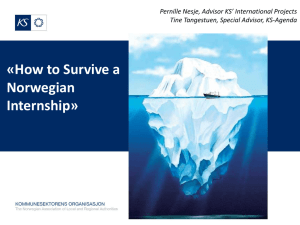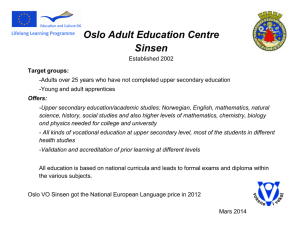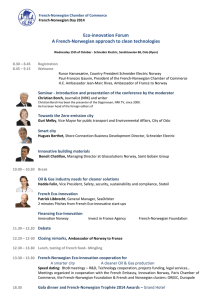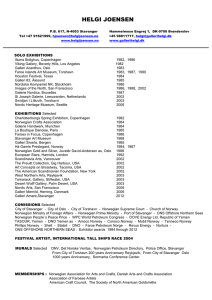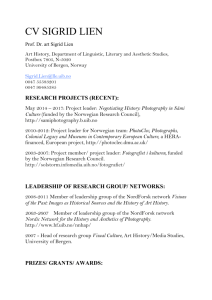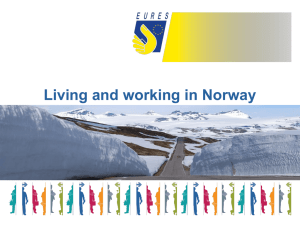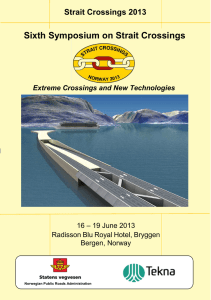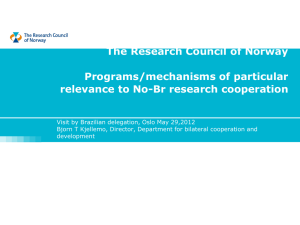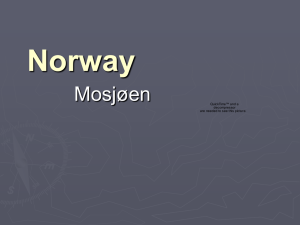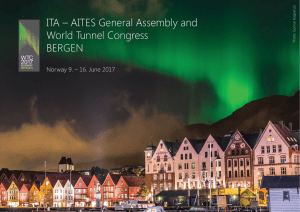From Exclusion to Inclusion: Pakistani Community in Norway
advertisement
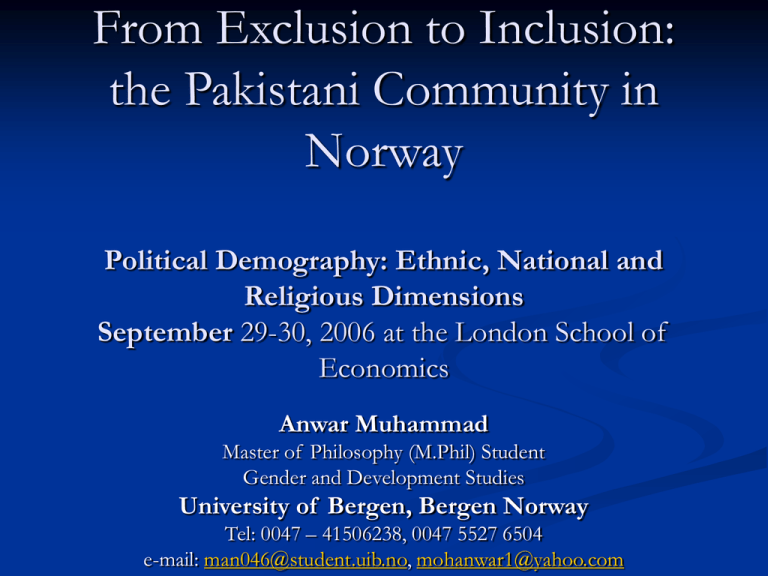
From Exclusion to Inclusion: the Pakistani Community in Norway Political Demography: Ethnic, National and Religious Dimensions September 29-30, 2006 at the London School of Economics Anwar Muhammad Master of Philosophy (M.Phil) Student Gender and Development Studies University of Bergen, Bergen Norway Tel: 0047 – 41506238, 0047 5527 6504 e-mail: man046@student.uib.no, mohanwar1@yahoo.com Research Questions Is rapidly growing population of second generation Pakistani’s in Norway making any major progress in integration? Are there any difference in adjustment and integration into Norwegian society by Pakistani’s who migrated to Norway and the one’s who born in Norway? Methodology at a Glance Qualitative Geographical Focus Literature review, expert interviews, in-depth interviews (20), FGDs (3), case studies & best practices. Oslo & Bergen (first & second biggest city) Concerned Population University of Oslo/Bergen, University Collage Oslo/Bergen Introduction Norway's population – 4.6 million; Immigrants 8 percent of total population – from 200 countries; Pakistani’s biggest immigrant community; and Majority based in Oslo. The first Pakistani group of ten men arrived in Oslo in 1967. Situation Analysis Chain labour Migration to Norway 1960’s – 70’s; Social Interaction Process - financial; Class System in Community – rural urban; Demographic Increase in Population; and Continuation of Practices of Pakistani Cultural Values in Norway – Problematic domain Theoretical Context ‘In-between-two Cultures’ – Problematic Aspect ‘Cultural Hybridity’ – Positive Aspect According to Sernhede, Andersson (et. Al 2005) the ‘cultural hybridity’ approach tends to focus on the positive and emancipatory aspects that exist in the migrants youth status, the other approach focuses on the negative aspects on selfidentity, of being forced to be ‘in-between-two-cultures’. Negotiation of Identity Integrated Plural Identity Social & Cultural Norms and Values by Pakistanis Pak – Good Pak - Bad Respect Caring Joint family Honest/hard working Nor - Good Nor - Bad Control system Individual freedom/indep endence Gender Welfare system discrimination Image of Islam Self-centred Lack of family system Alcoholism & Youthness Second generation’s dilemma – conversation with a girl (23), in Oslo Norway born Pakistanis suffer a crisis of identity. It is our parents who came to Norway under the ‘spell’ of economic migration but couldn’t completely integrate with the local population. Because they were desperate to maintain traditions they were brought up in and comfortable with, they created their own community within the wider community so as to establish a desi (local/traditional Pakistani) atmosphere where they and their families could feel comfortable. And so begins the problem. The second generation is torn between the two almost completely different ways of life. The dilemma occurs when these youngsters have to decide what they identify with –– are they supposed to feel Pakistani or Norwegian? ……… Freedom of expression has it’s own worth and we (youth) are utilizing positively in different fields in Norway. Parents have to change their mind set regarding integration and adjustment in Norwegian society and they are Parents Views – Integration and Identity in Norway - Oslo In complete contrast to the youth, the elders argued that traditions are marred because the youth are in disarray and have lost understanding and respect for the values and traditions that have been the backbone of society for so long. According to parents the blame is primarily attributed to the Norwegian syndrome, and exposure to the western media. Much to the elders’ dismay these youngsters wander aimlessly, indulge in trivial pursuits, drive fast cars, listen to rap music, mimic Hollywood actors and care only about their ‘bling’ image and ‘street cred’. When they speak, they proudly use a mixture of slang and pure nonsense - none of which is comprehended by the elders. Demographic Dimension Increasing number of second generation; Impact on society; Educational participation Labour force participation Engagement in organized crime Religious Dimension Islam – teaching vs. practice; Second generation – image of Islam; Cartoon’s discourse – role of Norwegian Pakistani’s What to do? Where to go? 9/11, Media reporting & Society stereo-type??? Way Forward With the passage of time Pakistani community has well integrated with Norwegian society, particularly youths. Media’s perception, reporting and political discussion can play a major role for their further social inclusion in the society. Highlighting positive aspects of the community can bring more fundamental results in the integration process in Norway. More research work by outsiders (not Norwegian but either Pakistani or of other nationals) will enrich the research results and findings. Old-fashioned sociological researches should be replaced with new inclusive approaches of integration, migration and identity work in order to maximum utilizing migrants potential for the country. Questions & Answers Thanks


